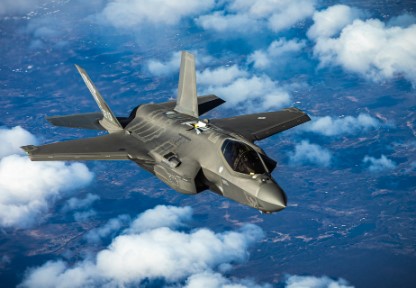Belgium has made a surprising move that could affect how some of the world’s most advanced fighter jets are made. Instead of building more of its F-35 Lightning II jets in the United States, Belgium wants them assembled in Italy.
Belgium’s New Direction in Fighter Jet Assembly
This decision could change the way Europe handles its military purchases and affect factories in the U.S. that currently make these jets.
The F-35 is a top-tier fighter jet used by NATO countries. It is known for its stealth, advanced sensors, and ability to connect with other aircraft in battle. The F-35A, the version Belgium uses, can fly fast, far, and carry powerful weapons while staying hidden from radar.
Belgium started buying F-35s in 2018 to replace its older fighter jets. The plan was to buy 34 new jets, with the first one built in the U.S. and delivered in 2024. The country has been getting ready to host these jets at its air bases by building new hangars and training facilities.
In a World-First, U.S. Air Force Turns Two Damaged F-35s into Cutting-Edge ‘Frankenjet’ Combat Plane
However, Belgium now wants the next jets built in Italy. Italy has a special factory called the Cameri FACO, which already makes and maintains F-35s for European countries. This factory is operated with U.S. support but gives European nations more control over their defense equipment.
Why Belgium’s Proposal Matters to Europe and the U.S.
Belgium’s new plan is part of a bigger story in Europe. Many European countries are trying to produce more military equipment within the region. This idea supports European industries and helps reduce dependence on other countries, especially during global events like the COVID-19 pandemic or political tensions.
The Italian factory is already making jets for other countries like Italy, the Netherlands, and soon Switzerland. It has modern tools and experienced workers. By shifting more work to this site, Europe could save time and money on shipping and maintenance. It would also create more jobs in Europe.
But this proposal could cause problems for the U.S., where many of the F-35 jets are built today. The U.S. factory in Fort Worth, Texas, is a large and busy center for producing these jets. Moving some of that work to Italy could affect American workers and businesses involved in making F-35 parts.
Deadly US F-35 Deployment Escalates Conflict with Houthis in the Middle East
Also, the F-35 program is very complex. It includes parts and technology from dozens of countries. Even if the jets are assembled in Italy, many critical systems are still controlled or monitored by the U.S. This means Europe will still rely on American systems, especially the advanced software and communication networks used in the jet.
There is also a risk of delays and increased costs. Any change in the production process can create slowdowns. In fact, some of Belgium’s F-35 deliveries have already been delayed because of software updates, showing how small problems can impact the whole program.
A Bigger Picture of Europe’s Defense Plans
Belgium’s decision comes at a time when Europe is thinking more about defending itself. After the invasion of Ukraine in 2022, many European countries increased their defense spending and tried to work more closely together on military projects.
The European Union supports these efforts and wants countries to buy and build more military equipment within Europe. Belgium’s plan fits into this goal. By assembling F-35s in Italy, Europe gets more involved in the supply chain and builds up its own industries.
But the situation also shows a tricky balance. NATO, the defense alliance that includes both the U.S. and many European countries, relies on cooperation. The F-35 is a key part of this cooperation, allowing different air forces to work as one. If too many countries want their own changes or special treatment, it could make the program harder to manage.
China’s Veiled Warning to US; WZ-9 Drone Could Detect F-35 and B-21
Other countries using the F-35, like the Netherlands and Poland, may now consider where their jets should be built. While some may prefer the speed of U.S. production, others might want to follow Belgium’s lead and focus on local assembly.
There are also questions about whether the Italian factory can handle more orders. If it becomes too crowded, it might slow things down or raise costs. This could hurt the overall success of the F-35 program in Europe.
Despite all this, the F-35 remains a very popular jet. It’s expected that more than 400 of them will be flying from European bases by 2030. Compared to other advanced jets from countries like Russia or China, the F-35 still offers better technology, sharing of information, and compatibility with NATO systems.
Belgium’s plan shows how countries are thinking not just about defense, but also about economics and independence. It also raises important questions about how NATO countries can stay united while following their own interests. While the U.S. remains a key partner, Europe may be starting to take more steps on its own in building and managing advanced military tools like the F-35.

